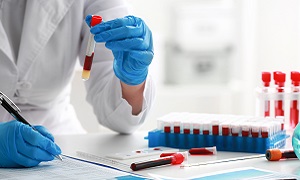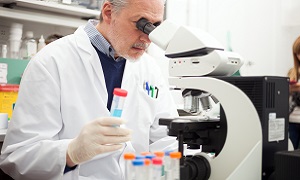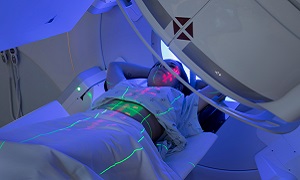Hodgkin's Lymphoma
The cancer of the lymphatic system is called Hodgkin’s Lymphoma. The lymphatic system is a part of the immune system of the human body. While it may occur at any age, it mostly affects the people of 20-40 years age group. It may also affect the people who are over the age of 55 years. There is an abnormal cellular growth of the cells in the lymphatic system that spread to all parts of the body in Hodgkin’s Lymphoma. There are two most common types of cancer in the lymphatic system. Of them, one is the Hodgkin’s Lymphoma (or Hodgkin’s Disease) while the other is the Non-Hodgkin’s Lymphoma.
The white blood cells protect your body from infections and germs. Hodgkin’s Lymphoma originates from these cells. With the progression of the disease in patients with Hodgkin’s Lymphoma, the body weakens and is unable to fight the body infections. In this disease, the cells begin to multiply and produce malignant cells. These malignant cells have the ability to invade various tissues of the entire human body. Males more commonly suffer from the disease than females.
Types of Hodgkin's Lymphoma
The type of cells and the behavior of the cells involved determine the type of Hodgkin’s Lymphoma.
- Classic Hodgkin’s Disease
- Nodular Lymphocytic Predominant Hodgkin’s Lymphoma
Classical Hodgkin’s Lymphoma
Classical Hodgkin’s Disease is a more common type of this cancer. People who suffer from this disease have abnormal, large cells. These cells are the Reed-Sternberg cells. There are four subtypes of Classical Hodgkin’s Lymphoma.
- Nodular Sclerosis Hodgkin’s Lymphoma- Characterized by collagen bands surrounding one nodule, it has characteristic Hodgkin’s Reed-Sternberg cells that have a lacunar type morphology.
- Mixed Cellularity Hodgkin’s Lymphoma- It is a type of Classical Hodgkin’s Lymphoma and is the second most common type. A considerable portion of the affected population suffers from Mixed Cellularity Hodgkin’s Lymphoma.
- Lymphocyte-depleted Hodgkin’s Lymphoma- While it is rich in Hodgkin Reed-Sternberg cells, it has a lesser number of non-neoplastic lymphocytes. Lymphocytes are a type of white blood cell responsible for protecting the body from infections.
- Lymphocyte-rich Hodgkin’s Lymphoma- It is also a type of Classical Hodgkin’s Lymphoma. It comprises scattered Reed-Sternberg cells with a diffuse cellular background. It consists of small lymphocytes with an absence of eosinophils & neutrophils.
Nodular Lymphocytic Predominant Hodgkin’s Lymphoma
It is a rare type of Hodgkin’s Lymphoma. It comprises abnormal, large cells called popcorn cells. They have the appearance of popcorn and hence the name. If diagnosed early, there are high chances of a cure for patients suffering from this disease.
Causes of Hodgkin's Lymphoma
Although the causes for Hodgkin’s Lymphoma remains unknown, it begins with a genetic mutation in the germ-fighting cells called the lymphocytes. The cells multiply instantly because of the genetic mutation and result in diseased cells that further multiply to spread throughout the body. There are large number of abnormal lymphocytes because of the genetic mutation that accumulates in the lymphatic system. They outnumber the healthy cells to cause Hodgkin’s Lymphoma.
Symptoms of Hodgkin's Lymphoma
The signs and symptoms of Hodgkin’s Lymphoma are:
- Night sweats
- Increased sensitivity to the effects of alcohol
- Painless swelling of the lymph nodes in the neck and armpit region
- Unexplained weight loss
- Fatigue
- Pain in the lymph nodes after the consumption of alcohol
- Fever
- Severe itching
Diagnosis of Hodgkin's Lymphoma
For the diagnosis of Hodgkin’s Lymphoma, your doctor will note down your medical history. He may also ask about the medical history of your family and your personal history. The doctor will recommend some tests and procedures for the diagnosis of Hodgkin’s Lymphoma.
Physical examination

Testing of blood

Imaging tests

Lymph node biopsy procedure

Bone marrow sample for testing

Treatment options for Hodgkin's Lymphoma
The type of disease, the stage & severity of the disease, your health, your age and your preferences play an essential role in the treatment options for Hodgkin’s Lymphoma. The primary motive of the treatment for Hodgkin’s Lymphoma is to bring the disease under control and destroy as many cancer cells to prevent the spread of cancer.
Chemotherapy

Radiation therapy

BMT

